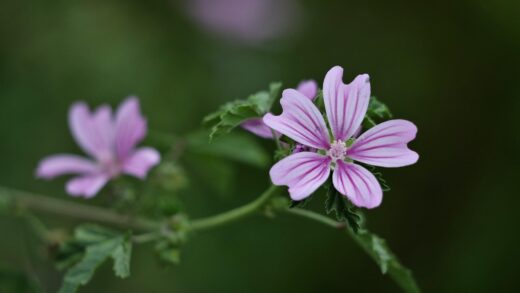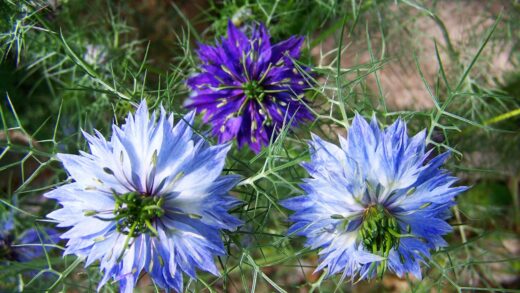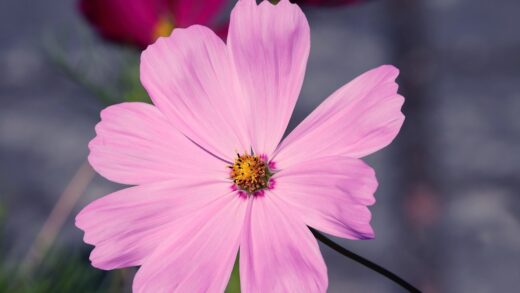Mastering the art of watering is arguably the most critical aspect of successfully cultivating regal pelargoniums, as their susceptibility to root rot makes them far less forgiving of irrigation errors than many other common garden plants. These stunning specimens have a distinct aversion to “wet feet,” meaning their roots should never be left to sit in waterlogged soil for any extended period. The core principle to embrace is that it is always safer to slightly underwater than to overwater. Achieving the perfect balance requires a hands-on approach, where the gardener learns to assess the plant’s needs by observing the soil, the weight of the pot, and the condition of the foliage, rather than adhering to a rigid, predetermined schedule.
A fundamental understanding of the plant’s needs begins with the soil. Regal pelargoniums must be planted in a very well-draining potting medium. This is non-negotiable. A mix that retains too much water will inevitably lead to problems, as the fine roots will be deprived of oxygen and begin to decay, a condition known as root rot. Therefore, before even considering your watering technique, ensure your plant is in a substrate amended with perlite or grit and in a pot with ample drainage holes. This foundational setup is your first and most important line of defense against the dangers of overwatering.
The most reliable method to determine if your regal pelargonium needs water is to physically check the soil. Do not rely on a fixed schedule, such as watering every few days, as the plant’s needs will fluctuate dramatically based on temperature, humidity, light levels, and its stage of growth. Instead, insert your finger into the soil up to the second knuckle. If the soil feels dry at this depth, it is time to water. If you feel any moisture, it is best to wait another day or two and check again. This simple tactile test prevents the most common mistake of watering soil that is already sufficiently moist below the surface.
When it is time to water, the technique you use is just as important as the timing. Water the plant thoroughly and deeply, until you see water begin to freely exit the drainage holes at the bottom of the pot. This ensures that the entire root ball has been moistened. After this thorough watering, allow the pot to drain completely and, crucially, discard any excess water that has collected in the saucer or tray beneath. Allowing the pot to sit in this standing water completely negates the benefits of well-draining soil and is a direct invitation for root rot to set in.
Watering frequency throughout the seasons
The water requirements of a regal pelargonium are not static; they change significantly with the seasons, mirroring the plant’s natural cycle of active growth and dormancy. In the spring, as the plant emerges from its winter rest and begins to produce new leaves and shoots, its water needs will gradually increase. You will find that you need to water more frequently than you did during the winter. However, it is important to increase the frequency slowly, always performing the touch test to ensure the soil is drying out appropriately between waterings as the plant ramps up its metabolic activity.
More articles on this topic
Summer marks the peak of the growing season, and this is when the plant will be at its thirstiest. During hot, dry periods, you may need to water every few days, especially if the plant is in a smaller pot which will dry out more quickly. Despite this increased frequency, the core principle remains the same: check the soil first. The combination of higher temperatures, longer daylight hours, and active growth means the plant is transpiring more and using water more rapidly. Consistent moisture during this period is essential to support healthy foliage and sustain any remaining flower production.
As autumn approaches and the days become shorter and cooler, the plant’s growth will naturally begin to slow down as it prepares for dormancy. This is a critical time to start reducing the frequency of your watering. The cooler air and reduced light mean that the soil will take much longer to dry out. Continuing to water with the same frequency as in summer is one of the most common ways to cause root rot in the autumn. Begin to allow the soil to dry out more thoroughly and for longer periods between each watering, signaling to the plant that it is time to rest.
Winter is the dormant period for regal pelargoniums, and their water needs are at an absolute minimum. During this time, the primary goal is simply to prevent the root ball from completely desiccating. You should only water very sparingly, perhaps as little as once every three to four weeks, depending on the conditions in your overwintering location. The soil should be allowed to become quite dry before you provide a small amount of water. Overwatering during winter dormancy is almost always fatal, as the inactive roots are unable to take up the excess moisture, leaving them to sit in cold, damp soil and rot.
The impact of pot type and size
The type of container you choose for your regal pelargonium has a direct and significant impact on its watering needs and your overall irrigation strategy. Traditional unglazed terracotta or clay pots are often highly recommended for these plants. The porous nature of clay allows for moisture and air to pass through the sides of the pot, which greatly accelerates the drying time of the soil. This “breathability” provides an excellent buffer against accidental overwatering and helps to ensure that the roots have access to the oxygen they need, closely mimicking the conditions these plants prefer.
More articles on this topic
Conversely, plastic or glazed ceramic pots are non-porous, meaning that water can only escape through evaporation from the top surface and drainage from the bottom. Soil in these types of containers will remain wet for a much longer period compared to terracotta. While these pots are perfectly suitable, they demand a more vigilant and careful approach to watering. If you choose to use a plastic or glazed pot, it becomes even more critical to use an extremely well-draining soil mix and to be absolutely certain that the top few centimeters of soil are dry before you even consider adding more water.
The size of the pot relative to the plant’s root ball is another crucial factor influencing your watering routine. A plant in a small pot will have a limited volume of soil, which will dry out very quickly, especially during warm weather, requiring frequent checks and watering. On the other hand, a common mistake is to place a small plant into a very large pot, assuming it will provide ample room to grow. This practice, known as over-potting, is dangerous because the large volume of soil that is not yet occupied by roots will hold moisture for a long time, creating a swampy environment that can easily lead to root rot.
Therefore, the best practice is to pot your regal pelargonium in a container that is just slightly larger than its root system. This ensures a healthy balance, where the soil volume is large enough to provide moisture and nutrients but small enough that the plant’s roots can effectively draw water from it, allowing the medium to dry out in a reasonable amount of time. As the plant grows and becomes root-bound, you can then move it up to the next pot size, typically one that is only 2-5 cm wider in diameter. This gradual upsizing helps to maintain a healthy root-to-soil ratio.
Recognizing signs of watering issues
Your regal pelargonium will provide clear visual cues when it is unhappy with its watering situation, and learning to read these signs is key to correcting problems early. The most common sign of overwatering is yellowing leaves, particularly the lower ones, which may also feel soft or mushy. In advanced stages of root rot, the base of the stems may become blackened and soft, and the entire plant will appear wilted and sickly, even though the soil is wet. This wilting occurs because the decaying roots are no longer able to absorb water, effectively causing the plant to die of thirst in a sea of moisture.
Paradoxically, wilting can also be a sign of underwatering. However, in this case, the plant will appear droopy and lackluster, but the soil will be bone dry to the touch and the pot will feel very light. The leaves may also start to develop crispy brown edges and may eventually drop off as the plant tries to conserve its limited water resources. When you see these signs, a thorough watering is needed. It is best to water from the bottom or to water slowly from the top, allowing the dry soil time to fully rehydrate, as extremely dry soil can sometimes become hydrophobic and resist water absorption initially.
Another indicator related to watering is the phenomenon of oedema (or edema). This occurs when the plant takes up water faster than it can transpire it through its leaves, often due to overly moist soil combined with high humidity and low light. The excess water pressure causes cells on the undersides of the leaves to burst, forming small, blister-like bumps or corky, brownish spots. While not a disease, oedema is a clear sign that you need to adjust your watering practices by reducing frequency and ensuring better air circulation around the plant.
Ultimately, the best approach is proactive observation. Make it a habit to not only check the soil but also to look at your plant’s overall appearance regularly. Healthy regal pelargoniums have firm, vibrant green leaves and sturdy stems. Any deviation from this, such as drooping, discoloration, or leaf drop, should prompt you to investigate the cause. By correlating the plant’s appearance with the condition of its soil, you can fine-tune your watering habits and respond to the plant’s needs with precision, ensuring it remains healthy and hydrated without succumbing to the dangers of excess moisture.
Water quality and temperature considerations
While frequency and volume are the primary concerns, the quality of the water you use can also play a role in the long-term health of your regal pelargoniums. These plants can be sensitive to the chemicals and salts present in tap water, particularly in areas with very hard water. Hard water contains high levels of dissolved minerals like calcium and magnesium, which can accumulate in the soil over time. This buildup can alter the soil’s pH and may eventually interfere with the plant’s ability to absorb essential nutrients, potentially leading to deficiencies and stunted growth.
If you know your tap water is particularly hard, or if you notice a white, crusty buildup on the soil surface or the pot, you may want to consider alternative water sources. Rainwater is an excellent, naturally soft, and slightly acidic option that is ideal for most container plants, including pelargoniums. Collecting rainwater is a simple and sustainable practice. Another option is to use distilled or filtered water. Alternatively, you can allow your tap water to sit out in an open container for at least 24 hours before use. This allows some chemicals like chlorine to dissipate, although it will not reduce the mineral hardness.
The temperature of the water can also affect the plant. Using very cold water, especially during the winter, can shock the plant’s root system. The roots of a dormant or semi-dormant plant are particularly sensitive, and a sudden drenching with icy water can cause stress and potential damage. It is always best to use water that is at room temperature or lukewarm. This simple precaution ensures that you do not cause unnecessary stress to the plant’s delicate root system, allowing it to absorb the moisture it needs without a sudden, jarring temperature change.
Finally, a good practice to incorporate into your routine every few months is to leach the soil. This process involves flushing out the accumulated mineral salts from tap water and excess fertilizer. To do this, simply take the plant to a sink or an outdoor area and water it thoroughly from the top, allowing a large volume of water to flow through the potting mix and out of the drainage holes. Let the water run through for several minutes. This flushing helps to reset the soil environment and prevents the toxic buildup of salts, ensuring the roots remain in a healthy and balanced medium.


















